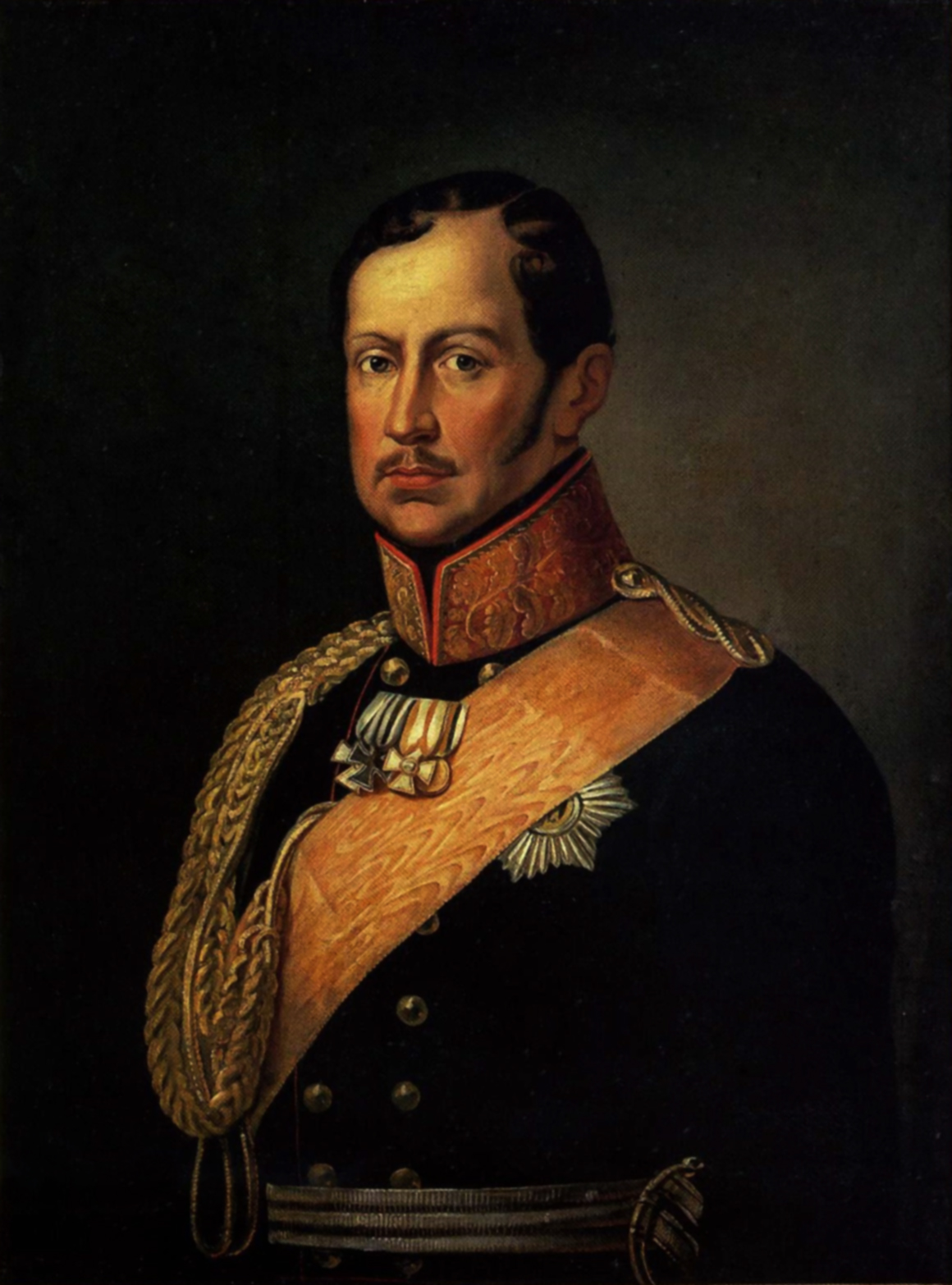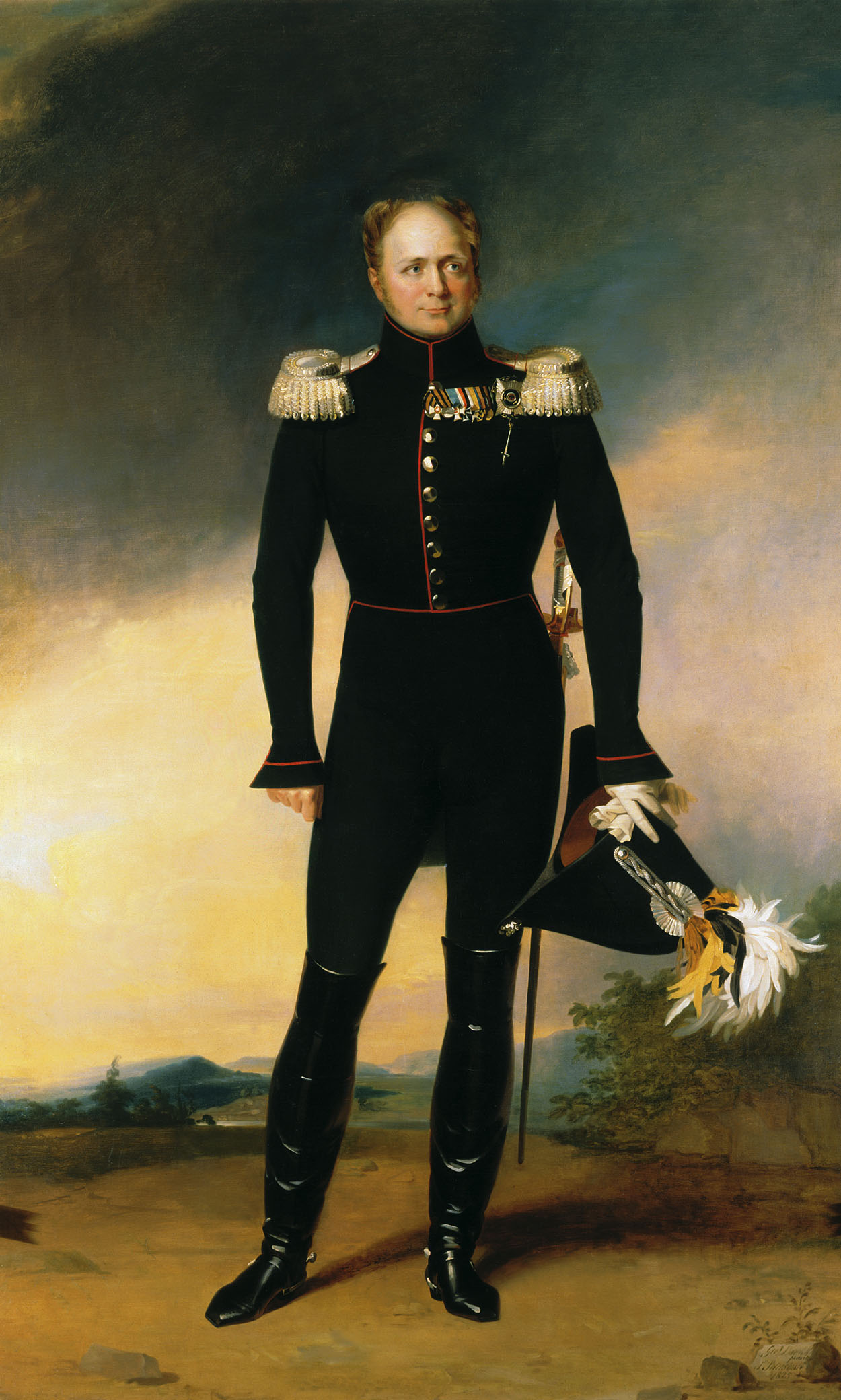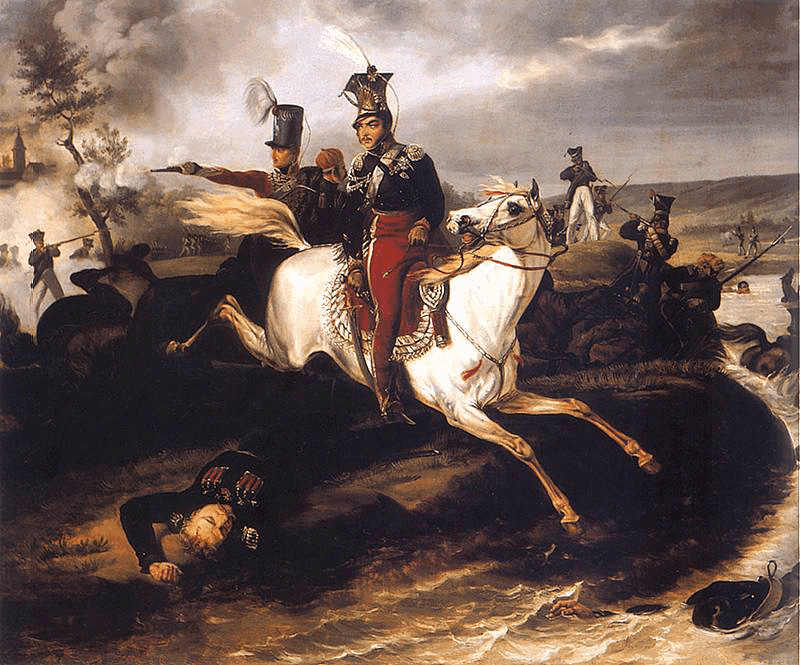This post is the fifth and final part of our blog series looking at some of Napoleon’s great battles. We have chosen to adopt a wide definition of greatness that goes beyond demonstrations of military skill but also includes factors such as political consequences and the numbers of men involved. For other blog posts in this series, click here.
We cover the Battle of Leipzig in 1813, arguably the most consequential battle of the Napoleonic Wars. For those of you looking for a blow-by-blow account of the battle, you will be disappointed. It is impossible to cover a four day battle on several fronts in detail in a single blog post. Instead we present the circumstances that led to the battle, and overview of the key episodes, followed by a discussion about its significance to the Napoleonic era and wider European history.
The background to the Battle of Leipzig is the failure of Napoleon’s invasion of Russia. Angered by Russia’s decision to violate the Continental System from 1810, Napoleon began to organise an invasion force to get the Tsar back into line. The 500,000-strong invasion force he assembled in 1812 was designed to intimidate Tsar Alexander in the first instance, and in the second to secure a decisive victory over the Russian army and force the Tsar to sue for terms. Instead, the Russian army opted to retreat, extending Napoleon’s supply lines and providing strong resistance with every rearguard action. Napoleon managed to enter Moscow in September hoping Alexander would negotiate, but the Tsar held firm, forcing Napoleon to retreat and his army to be decimated in the winter harassed by Cossacks.
To read more about Napoleon’s invasion of Russia, check out our blog series.
Russia’s success in defeating Napoleon in 1812 emboldened the Tsar to expand the war beyond Russia’s borders and to deal with the upstart Corsican once and for all. Prussia had been, and General Ludwig Yorck’s Prussian corps was neutralised at the Convention of Tauroggen at the end of December 1812. In February 1813 Tsar Alexander and King Frederick William of Prussia signed the Treaty of Kalisz, establishing a formal alliance against Napoleon, thus forming the Sixth Coalition with Great Britain. During the Spring, Kutuzov’s Russians and Blücher’s Prussians swept away dozens of French-held fortresses in Poland and the Prussian heartland before Kutuzov’s death from illness in late April.

King Frederick William III of Prussia
By this point, Napoleon had managed to raise a new army and marched to contest the allied advance in Germany. In May 1813, Napoleon managed to defeat the allied forces at the battles of Lützen and Bautzen. However, casualties but a lack of cavalry meant he was unable to organise an effective pursuit of the beaten enemy. Nevertheless, Napoleon demonstrated that he could still defeat a larger enemy force with raw conscripts. Tsar Alexander and King Frederick William realised that even after 1812, Napoleon’s war machine was far from beaten.
The allies realised that they needed greater numbers and approached Austria for an alliance. Although the Austrians had no love for Napoleon, he was now married to an Austrian archduchess and Emperor Francis was reluctant to declare war on his son-in-law. Instead, he proposed an two month armistice for Austria to mediate between both sides. During the Armistice of Pläswitz signed on 4 June, Austria agreed to join Russia and Prussia if Napoleon did not agree to abandon his territories outside Italy and Belgium. Austrian Foreign Minister Metternich attempted in vain to persuade Napoleon to accept these terms, and on 12 August Austria declared war on France.

Klemens von Metternich
Meanwhile, the allies had adopted what came to be known as the Trachenberg Plan. The allies divided their forces into three armies: the Army of Bohemia (230,000 men) under Austrian Field Marshal Schwarzenberg, the Army of Silesia (110,000 men) under Prussian Field Marshal Blücher, and the Army of the North (140,000 men) under Crown Prince Charles John of Sweden, the former Marshal Bernadotte. Each of these armies would include soldiers from at least two nations, so defeat would not be fatal to any power's cause. The main strategic idea behind the plan was to engage French armies led by Napoleon’s marshals, but for each army to retreat when Napoleon advanced on them. Eventually, the three armies would isolate Napoleon and surround him with overwhelming force.
On 23 August Bernadotte defeated Marshal Oudinot at Grossbeeren as he advanced on Berlin. Blücher’s Army of Silesia followed up on this success by defeating Marshal Macdonald at the Katzbach on 26 August, but on the same day an unsuspecting Schwarzenberg was defeated by Napoleon’s main army at Dresden. Although a significant setback, Napoleon once again proved unable to capitalise on his tactical success, and any gains were reversed when Vandamme’s corps was counter attacked and defeated on 29-30 August at Kulm, allowing Schwarzenberg to retreat into Bohemia unmolested. On 7 September, in a second attempt to march on Berlin, Marshal Ney was defeated by Bernadotte at Dennewitz. Although defeated by Napoleon, the allies had won four battles against Napoleon’s subordinates, demonstrating the sound logic behind the Trachenberg Plan.

Karl Philipp, Prince von Schwarzenberg
The unsuccessful pursuit of Schwarzenberg’s army and the setbacks suffered by Oudinot, Ney, and Macdonald prompted Napoleon to leave Dresden garrisoned by Marshal St Cyr while he withdrew westwards across the River Elbe. Worse news was to come as Napoleon’s Bavarian allies defected to the coalition on 8 October. Meanwhile, Schwarzenberg had been reluctant to return to Saxony before he had the opportunity to reorganise his supply lines, and the new allied offensive did not begin until early October. Blücher and Bernadotte anticipated that Napoleon would meet Schwarzenberg’s advance at Leipzig, giving them the opportunity to strike at Napoleon’s rear from the north. A further 30,000 men from Bennigsen’s Army of Poland would approach from Dresden.
On 15 October, Napoleon had around 180,000 men in Leipzig. The allies had 200,000 men under Schwarzenberg to the south of Leipzig, while Blücher and Bernadotte each had around 75,000 men on the way to the north. Although significantly outnumbered, Napoleon opted to confront Schwarzenberg south of Leipzig at Wachau and Liebertwolkwitz with most of his force, leaving Ney to cover the northern front. He hoped to defeat the Army of Bohemia in time for him to use his internal lines of communication to deal with a subsequent attack from the north. This tactic of the ‘central position’ had been one of Napoleon’s favourites, and the terrain appeared favourable for him. Napoleon’s fortunes were further strengthened by Schwarzenberg’s initial plan of attack, which envisioned most of the Army of Bohemia to cross the River Pleisse and attack from the southwest, blocking any retreat westwards. The Russian generals and Tsar Alexander stubbornly resisted Schwarzenberg’s disposition, recognising the difficulty of the terrain at hand. The Tsar allowed Schwarzenberg to use the Austrian troops as he wished, but managed to keep Eugen of Wurttemberg’s II Corps and the Russian Guards to the east of the Pleisse.

Battle of Leipzig, action on 16 October
The fiercest fighting during the Battle of Leipzig took place on 16 October. Blücher’s men began to arrive on the battlefield earlier than Napoleon had anticipated and fiercely attacked the village of Möckern. This compelled Napoleon to leave behind Marmont’s Corps to support Ney. The French fought well and resolutely, and Blücher was only able to make his numerical superiority count by the evening. Meanwhile, an Austrian Corps under General Ignac Gyulai threatened Lindenau to the west of Leipzig, forcing Napoleon to detach Bertrand’s IV Corps. These actions therefore limited the number of men Napoleon had available to deal with Schwarzenberg’s army on the main southern front.
Rather than await Napoleon’s attack, Schwarzenberg had chosen to attack the French position, even though Bernadotte and Bennigsen’s armies, 100,000 men in total, were still over a day’s march away. The allies attacked in four columns. Kleist’s Prussian corps supported by a Russian division advanced on Markkleeberg along the Pleisse. The position was defended by General Poniatowski’s VIII Corps and supported by Marshal Augureau’s IX Corps. The village had been taken easily as the French did not expect to be attacked, but a fierce counterattack and heavy artillery fire saw the French retake the village. The momentum shifted back and forth through the day as Poniatowski heroically rallied his men. Only the arrival of Austrian reinforcements turned the tide in favour of Kleist’s men. Despite being forced to withdraw, Napoleon was so impressed by Poniatowski’s actions that he made the Polish prince a Marshal of the Empire, the only non-Frenchman to be on Napoleon’s list of marshals.
Meanwhile Duke Eugen of Wurttemberg’s Russian II Corps attacked Marshal Victor’s II Corps at Wachau. Like Kleist, he had taken his objective easily but was soon counterattacked. The French artillery fire was even heavier in this sector and Eugen’s men showed great courage by standing their ground in spite of their ever-thinning ranks. Tsar Alexander responded by calling for his Guards, realising that the allied centre was under heavy pressure and Napoleon would have the opportunity to break through and secure a brilliant victory. Eugen’s corps could do nothing more than stoically hold their ground and close ranks among their fallen comrades.
Napoleon had chosen to delay his main advance until Marshal Macdonald could advance on the east and threaten the flank of Klenau’s Austrian IV Corps. Klenau had briefly managed to take Liebertwolkwitz from Lauriston’s V Corps before being pushed back. Although Macdonald was in place, General Sebastiani’s cavalry force protecting his flank was attacked by Platov’s Cossacks and were unable to take part in the outflanking manoeuvre. This prompted Napoleon to turn his attention towards the thinning allied lines in front of Wachau. The attack was spearheaded by Lauriston’s corps and Marshal Oudinot’s Young Guard, and supported by a massive artillery battery of 150 guns under General Drouot, which continued to blast holes in Eugen’s corps.
Together with the light cavalry of the Russian Guard, Eugen’s remaining men in front of the village of Gossa was the only obstacle between the French and the allied command post on a hill behind Gossa. At this moment Napoleon turned to his brother-in-law and his great cavalry commander, Marshal Murat, and ordered him to throw 5,000 troopers against the allied centre. Eugen’s guns were captured but he managed to form his infantry into masses and withdraw them in order. The Russian Guard dragoons and lancers were swept aside, their commander General Shevich having been killed by artillery just before the attack. In increasing desperation, the allies tried to find all the available cavalry in the area. The Russian Guard hussars arrived just in time to check Murat’s cavalry, and Tsar Alexander saw the opportunity to send the Cossacks of the Guard under General Orlov-Denisov, which attacked the French formation in the flank and forced them to flee. The extraordinary cavalry action saw 2,000 Russian ‘lights’ defeat 5,000 French ‘heavies,’ and saved the day for the allies.

Tsar Alexander I of Russia
The threat from the cavalry had been parried, but Napoleon’s infantry was still advancing with artillery support. The Russian artillery commander Ivan Sukhozanet managed to establish effective counterbattery fire which forced the French artillery to withdraw. By this time the Russian and Prussian Guards commanded by General Alexei Ermolov arrived on the scene. Over the course of three hours the French attacked Gossa several times only to be driven out again. The Finland Guards proved their worth during the action. On one particular occasion, several officers were cut off by a French counterattack. A veteran private soldier named Leonty Korennoy fought off the French alone to allow the officers to escape. His courageous deed earned him the respect of the French soldiers who spared his life and presented him to Napoleon.

The feat of Leonty Korennoy
By the end of the first day of fighting, neither side had been able to make much ground on the main southern front. This tactical stalemate considerably worsened Napoleon’s position, as he had failed to defeat Schwarzenberg. Allied reinforcements were approaching and the numerical superiority would prove overwhelming. Rather than prepare to retreat, Napoleon believed that he could open negotiations with the allied monarchs, and sent the captured Austrian General Count Merveldt to Emperor Francis with a message to this effect. With their strategic position improving by the minute, allied headquarters was in no mood to talk peace and instead waited for the arrival of Bernadotte and Bennigsen to deliver the coup de grace.
Blücher’s success in the north on the 16th compelled Napoleon to withdraw closer to Leipzig itself. With a lull in proceedings on the 17th, the battle regained its intensity on the 18th. By the afternoon the allies gathered 380,000 men on the field and almost 1,400 guns deployed in a semi-circle to the north, east, and south of Leipzig. The final two days of the battle were an exercise in attrition. The allied commanders did not attempt anything adventurous, but simply aimed to wear Napoleon down and force him out of Leipzig.

Gebhard Leberecht von Blücher
As on the 16th, the allies had their greatest success in the northern sector. Blücher continued to move against Marmont and Ney, sending Fabian von der Osten Sacken’s Russians towards the Halle Gate in the northern suburbs of the city. Sacken’s efforts were strongly resisted by the Young Guard and Dambrowski’s Poles. Meanwhile, as Bernadotte’s Army arrived over the course of the morning, Blücher agreed to send him 30,000 Russians under General Langeron to attack Marmont at Schönefeld. A little further to the southeast, Bernadotte’s men were arriving in force to attack Reynier’s Saxons at Paunsdorf.
Perhaps the most famous episode on the 18th was the defection of 5,000 Saxons and their 60 guns to Bernadotte’s Army of the North. As Bülow’s Prussian III Corps advanced on Paunsdorf, the Saxons ran towards the enemy lines as quickly as possible. They were soon followed by Wurttemberg cavalry. The Saxons had served under Bernadotte at the Battle of Wagram in 1809 and were well-disposed towards him. Bernadotte added the Saxon guns to his own artillery, which included a British brigade of Congreave rockets. The artillery fire from Bernadotte’s batteries also allowed Langeron to capture and hold on to Schönefeld by six in the evening.

Charles John of Sweden (Jean-Baptiste Bernadotte)
Meanwhile, the main action in the south centered around the village of Probstheida, situated at the junction of the roads to Leipzig leading from Wachau and Liebertwolkwitz. Probstheida was a strong defensive position which formed the centre of Napoleon’s line. Nevertheless, the Tsar insisted on capturing the village in a frontal assault. A force of 60,000 men under the command of Barclay de Tolly made several attempts to capture the position but Russian and especially Prussian infantry came under heavy artillery fire by Drouot’s batteries, and could make no progress against the stubborn French defence. Schwarzenberg asked Tsar Alexander to release his Guards for a final push but the Tsar was reluctant to risk his elite infantry against a position which seemed impregnable. Only when Napoleon heard of the situation in the north did he pull back from Probstheida.
Napoleon had already begun making arrangements to retreat from Leipzig on the 17th, ordering Bertrand to secure the road to the west at Lindenau. The fighting on the 18th, in particular the loss of Schönefeld, convinced him that he had to withdraw. Napoleon claimed that the treachery of the Saxons forced him to retreat, but the reality was that – provided the allies did not commit major blunders – superior allied numbers would have prevailed sooner or later.

Battle of Leipzig, action on 18 October
On 19 October Napoleon organised a rearguard composed of Poniatowski’s Poles and Macdonald’s corps of Italians and Germans, leaving most of his artillery in place to slow down the allied advance. Perhaps Napoleon thought that these foreign contingents would follow the example of the Saxons and abandon him, but Poniatowski and Macdonald’s men fought bravely and admirably, slowing down the allies at every step, but by noon the allies were breaking through the city gates from four directions. Napoleon had already managed to withdraw most of his men across the River Elster when two Russian jager regiments under Langeron managed to approach the bridgehead, where hundreds of guns and thousands of men were still attempting to cross. Fearful of the advancing enemy, a corporal blew up the only bridge across the Elster, leaving the rearguards isolated. Marshal Macdonald managed to swim over the river to safety. A heavily wounded Poniatowski was less fortunate and drowned in the attempt.

Death of Poniatowski
More men took part in the Battle of Leipzig than any other battle in European history until the First World War. Over 600,000 men had taken part in the fight, of whom a quarter – 50,000 allies and 100,000 Frenchmen, were among the casualties. Despite his smaller army, Napoleon had a real chance to win the battle on the first day. Without the intervention of the Russian Guards, whom Alexander had prevailed upon Schwarzenberg to bring closer, the allied monarchs themselves might have been captured. In such an instance Napoleon would have easily been able to dictate terms. Alexander’s personal intervention therefore saved the allies at Leipzig, and made up for his blunders at Austerlitz eight years earlier. Napoleon’s army had performed admirably throughout the battle, holding their ground more often than not. Napoleon’s biggest mistake was his failure to prepare adequately for the retreat, leaving a single bridge over the Elster as the only avenue for withdrawal and consigning Poniatowski and his men to their fates.
The had significant political consequences for the European continent and Germany in particular. Napoleon’s control of his remaining German territories grew weaker over the course of the battle, exemplified by the defection of Saxon and Wurttemberg. After his defeat, Napoleon had chosen to abandon Germany and concentrate on the defence of France. The so-called Battle of the Nations was thus the successful culmination of the ‘Befrieungskriege’ or War of Liberation in Germany. Success at Leipzig also hardened the allies’ attitude towards a compromise peace with Napoleon. While Napoleon would have eagerly accepted the terms he rejected earlier in the year, the allies would stop at nothing until Napoleon was removed from power.
More than anything else, the allied victory at Leipzig was a successful demonstration of allied cooperation as envisaged by the Trachenberg Plan. During his greatest triumphs in 1805-07, Napoleon had succeeded in breaking up the coalition by defeating individual allied armies in the field of battle and forcing them to sue for peace. Napoleon had tried to do the same in 1813. The allied defeat at Dresden led to much anxiety on the part of the Austrians, but the coalition remained intact and committed to defeating Napoleon. Allied headquarters was no stronger to disagreements among the commanders. Alexander and Schwarzenberg had many heated debates, while Blücher was desperately trying to urge Bernadotte forwards, as if pulling on the leash of a recalcitrant dog. Nevertheless, Russian, Austrian, Prussian, and Swedish troops fought and died side by side to secure the famous victory.
As the allies marched on Paris in 1814, the allied monarchs and commanders continued to have major disagreements but the spirit of cooperation forged by the heat of battle at Leipzig prevailed and led to the successful conclusion of the campaign with the capitulation of Paris at the end of March 1814, soon followed by Napoleon’s abdication on 6 April. The cooperation between the allies during the Sixth Coalition soon began to fall apart as each nation argued for its own interests at the Congress of Vienna, but returned with an even greater zeal once Napoleon escaped from Saint Helena in 1815.



Share and get 15% off!
Simply share this product on one of the following social networks and you will unlock 15% off!